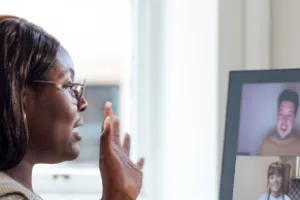The process helps everyone better understand the events leading up to the dispute and the impact on everyone involved. Our mediator will make sure everyone involved feels safe, heard and has time to explore their interests and needs. We ask that all parties come to the conversation with an open mind and respect for all participants.
We cannot consider a complaint that has not already been investigated by the organisation complained about. This is so they have the chance to put things right. Because of this, both parties will already be aware of the issues being discussed.
Step 1 Initial meeting
As a first step, our mediator will hold separate meetings with the complainant and the organisation complained about. These sessions typically take one hour.
Each party can share with us how they feel about the issues that have been raised and what they want to achieve from the process.
During these meetings you and the organisation can discuss with the mediator what you might want the other party to understand more clearly.
You may have a family member, friend or advocate with you at all discussions to provide support.
The organisation’s representative who attends the meetings should have a knowledge of the issues raised in the complaint and be able to discuss them in detail.
Mediation is a voluntary process and all parties must be comfortable with who is involved in discussions for us to proceed.
Step 2 Joint meeting
Following the separate initial meetings, we host a joint meeting. This will usually be within the same week as the first meeting or as soon as possible afterwards.
At this step, all parties will come together in a discussion facilitated by the mediator. This is an opportunity for you and the organisation to discuss how you both feel about the complaint being made.
The goal of the joint meetings is to find an outcome that both parties are happy with. The mediator will ask difficult questions to explore each party’s position and to reality test any agreements made.
These meetings usually take around three hours.
Step 3 Resolution
This third step helps resolve things informally without the need for investigation by the Ombudsman. It is an opportunity for both parties to find practical resolutions that work for everyone.
We will not usually give our opinion on any matters related to the dispute. However, if you are seeking a financial remedy and a sum cannot be agreed we may get involved. With both parties’ consent, we can give our view on an appropriate level of financial remedy. If we do this we will refer to our severity of injustice scale and to previous PHSO decisions in similar cases.
Next steps
If you and the organisation can agree a resolution we will:
- close the case
- write to both parties to record what has been agreed and confirm the end of our involvement
- monitor each party’s compliance with the actions in the resolution agreement.
If you and the organisation cannot agree on all or part of the resolution we will decide if any further action needs to be taken. This may or may not involve our standard investigation process. If we decide further investigation into the unresolved issues is needed, this will be passed to a caseworker who has not been previously involved in the complaint. Anything said during the meeting will remain confidential and will not be used in any subsequent proceedings.

